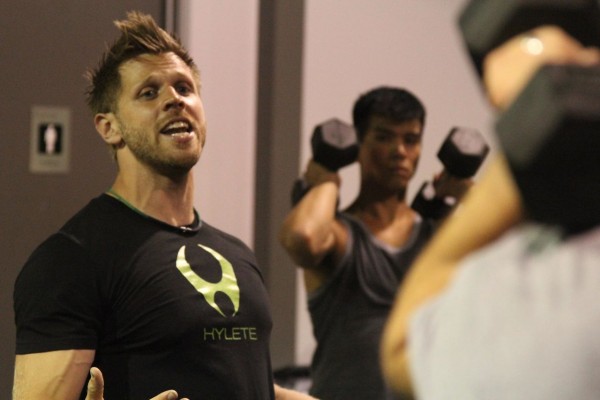
Athletes New to the Art of Strength Training
Written by Dave Lipson
Virtually any method of strength training will elicit a response in a novice, de-trained or un-trained lifter. A program with any significant level of intensity, whether it be lifting soup cans, P-90-X, INSANITY, CrossFit, or Westside Barbell’s conjugate method, will enhance the strength of an individual in just a few months. For this reason it can be very deceiving or misleading to interpret data gathered by exposing novice athletes to training protocols as a qualification of a program’s efficacy and efficiency. We see this all the time on TV in the form of the Shake Weight, Tony Little’s Gazelle training, The Perfect Pushup and Zumba. Something is always better than nothing, but what does this breed? Relatively inexperienced athletes moving with less than desirable technique, who achieve initial success and then plateau or recede due to injury, poor movement patterns, or lack of appropriate progression. So how do you differentiate yourself and your program from others? Here is the best suggestion I can give you:
Take the Time to set a Good Foundation of the Basics – New athletes should take the time to restore the range and correct pattern of basic movements. Anyone can slap weight on a barbell. It takes skill and dedication to move with virtuosity. Setting this foundation will raise your ceiling in the long run…increasing athletic potential, decreasing the risk of injury and ensuring a more fruitful and productive athletic life. Here are some basic concepts of movement.
Core Strength – The ability to support and maintain a neutral position of the spine as you move about the hips, knees, shoulders and elbows. This position evenly loads the vertebral discs of the spine…reducing shear and creating a safe and effective transmission of forces.
Tap Into Your Power Center – Athletes need to access the biggest, most powerful muscle groups in the body…the glutes, hamstrings and spinal erectors on the back side of the body. This area from the mid back to the mid thigh is your “Power Center”, where massive force can be produced. You can recruit into this musculature by initiating movement with the hips, balancing weight in the heels, turning over the pelvis to stretch the hamstrings and maintaining a strong lumbar curve of the lower back.
Move in Proximal to Distal Patterns – High levels of power are generated from the center out. This happens in a wave of contractions from the high force low velocity muscles of the core to the low force high velocity muscles of the extremities. You want to let the force of your hips carry over to your arms by not violating this chain of movement. Error can be seen in movements such as prematurely bending the arms in the Olympic lifts.
Restore Full Range of Motion – Athletes should be moving through their anatomical full range of motion. Partial range of motion results in partial strength and partial flexibility. To ensure good muscular balance and enhance muscular recruitment require full range exercises. This should be the first plan of attack…DO NOT WAIT!! You won’t learn to go full range once you develop a 400 lb quarter squat.
Anyone can use intensity to get in shape. It is the knowledge of your movement and mastering an appropriate prescription that preserves good technique that will ensure continued athletic development. Use these principles to differentiate yourself and your training from others.
Dave, what’s your take on HBBS vs LBBS in regards to the development of the core as well as anterior/posterior chains? and perhaps some guidance as to when each lift should be implemented?
#1 Kotsay Fan